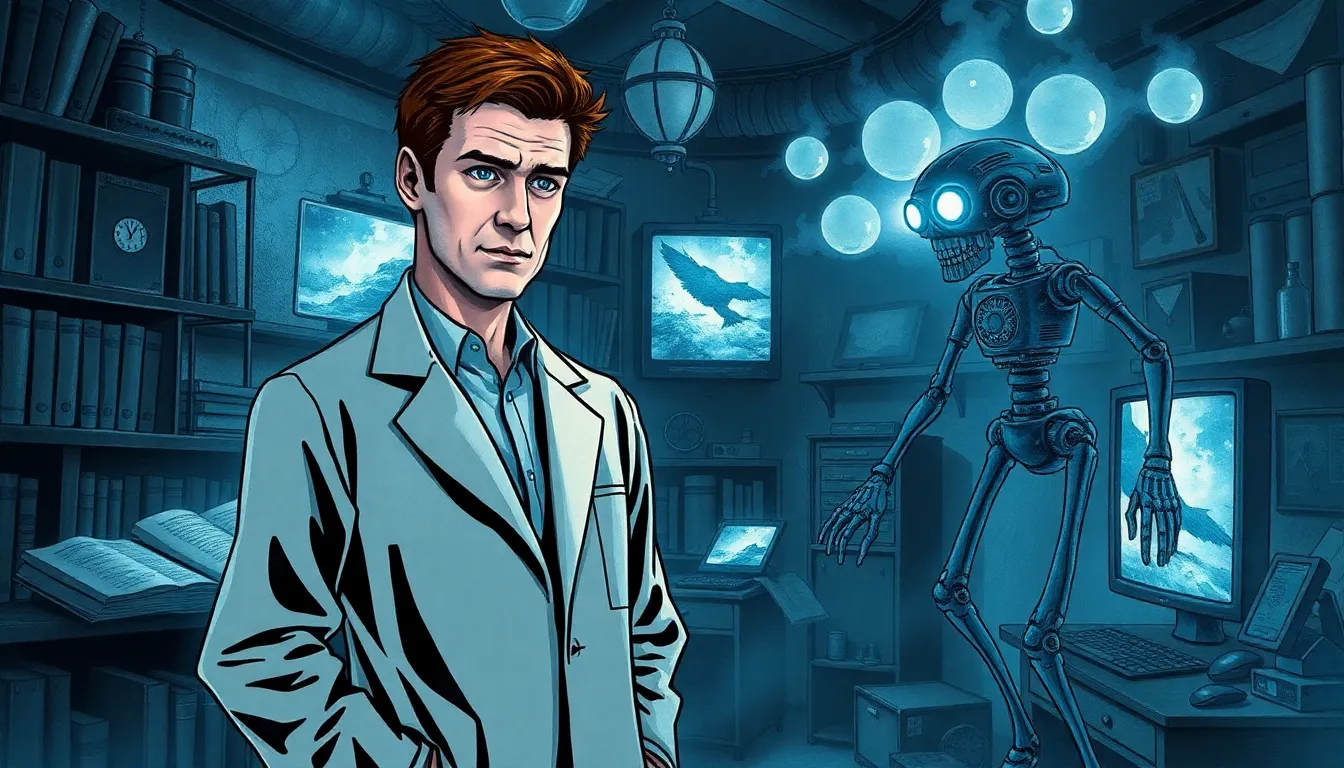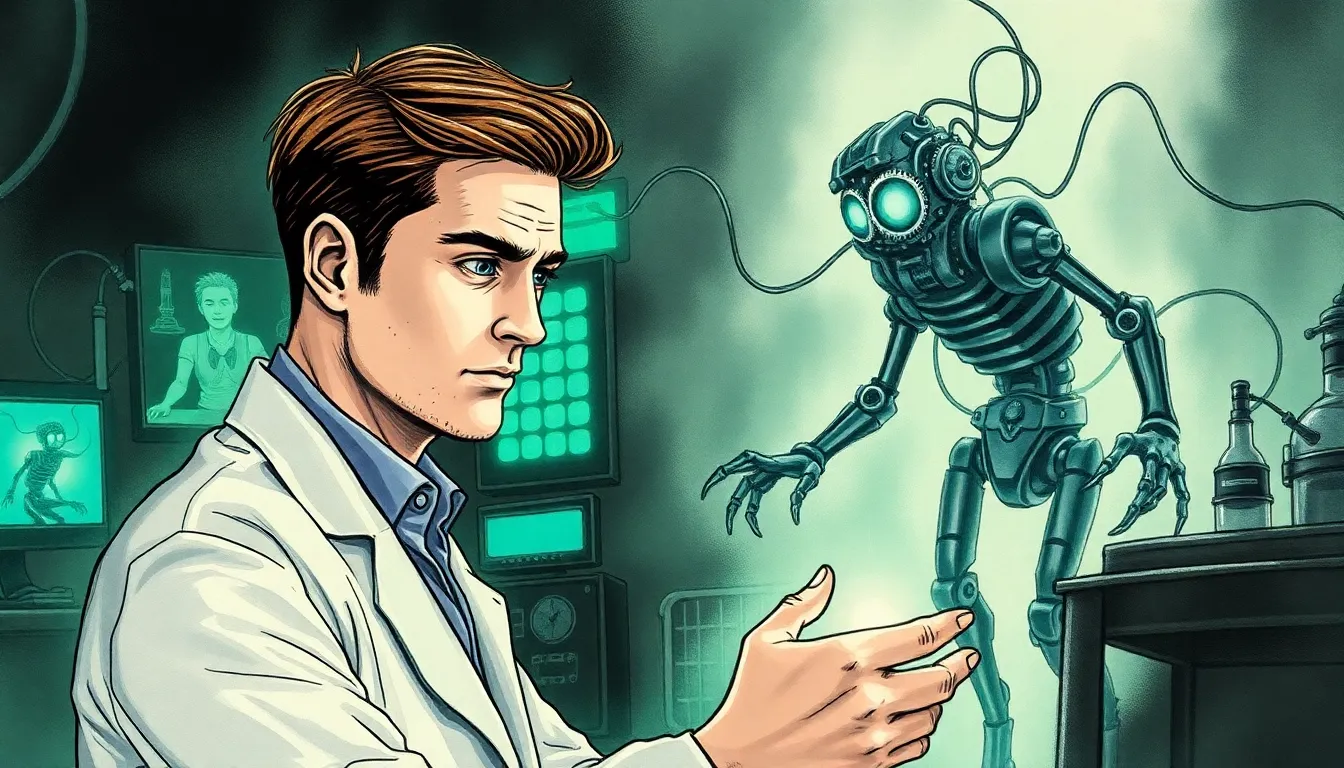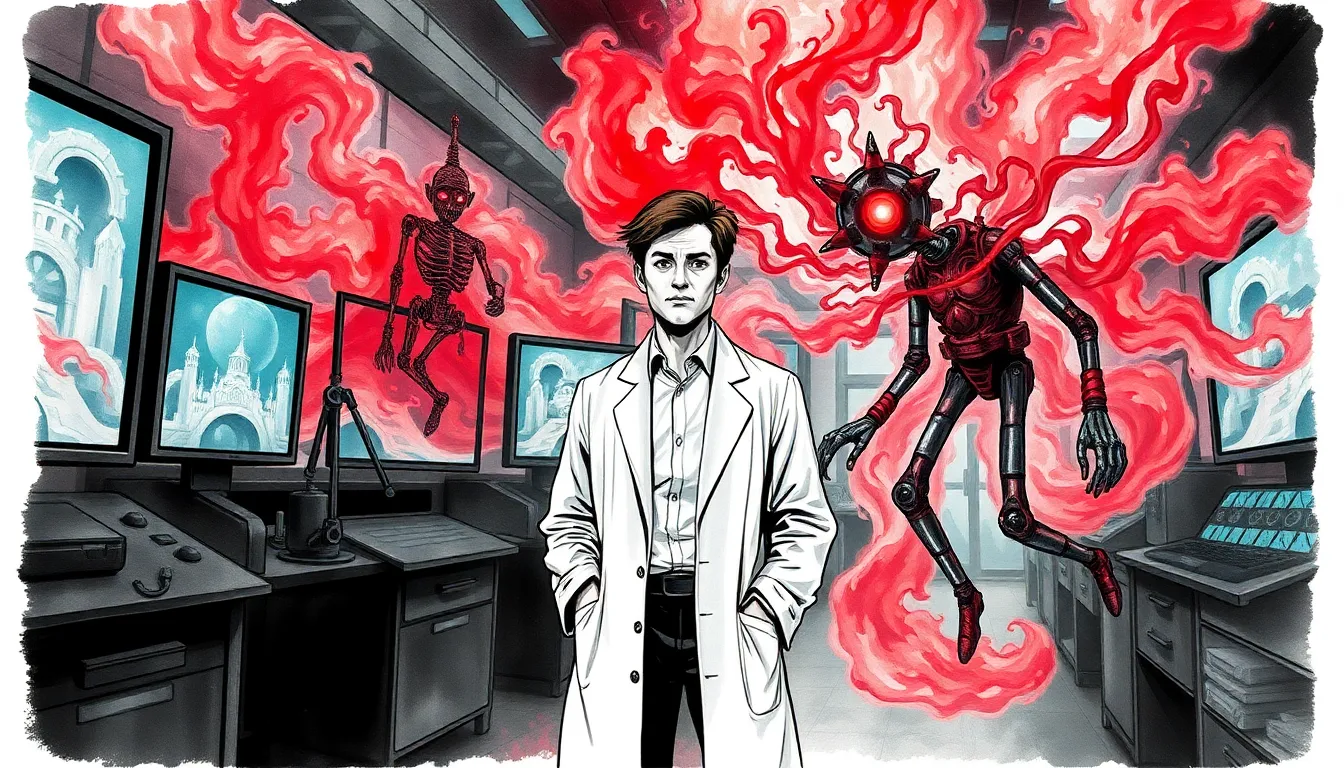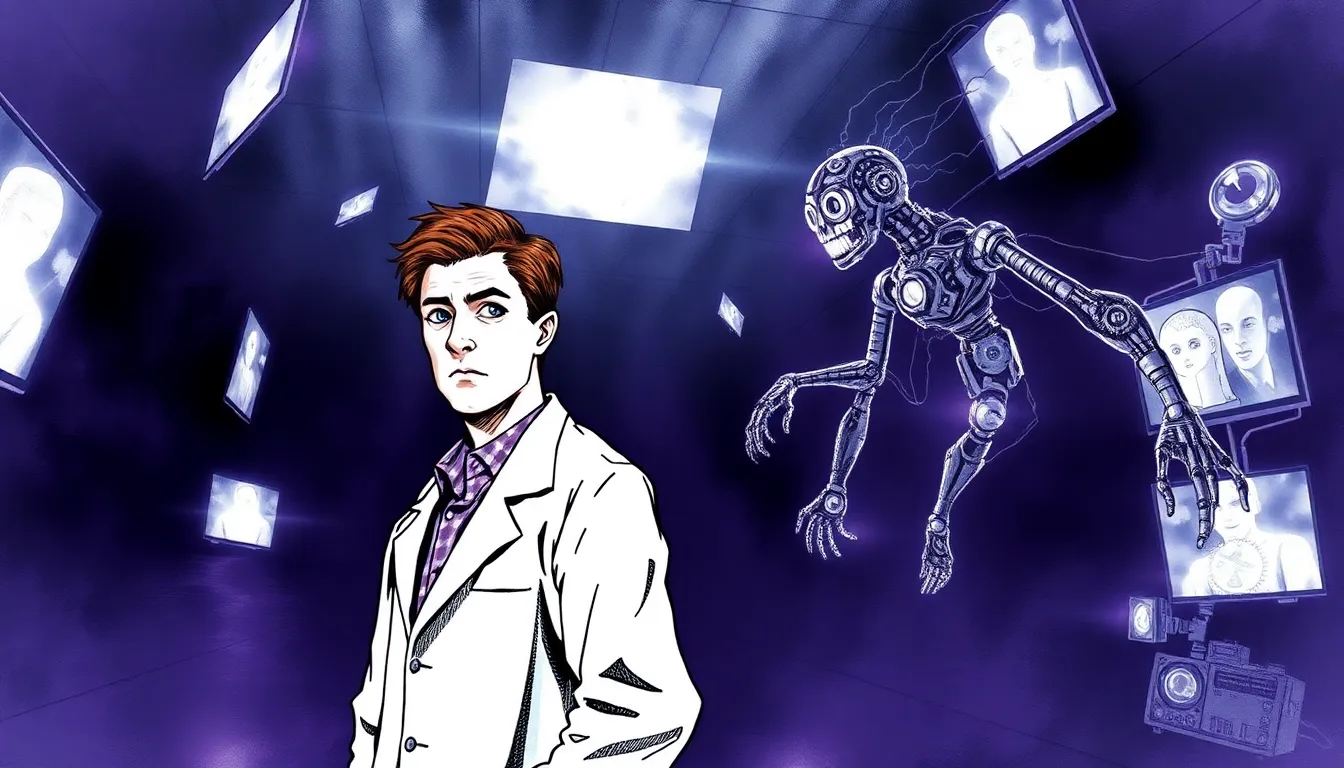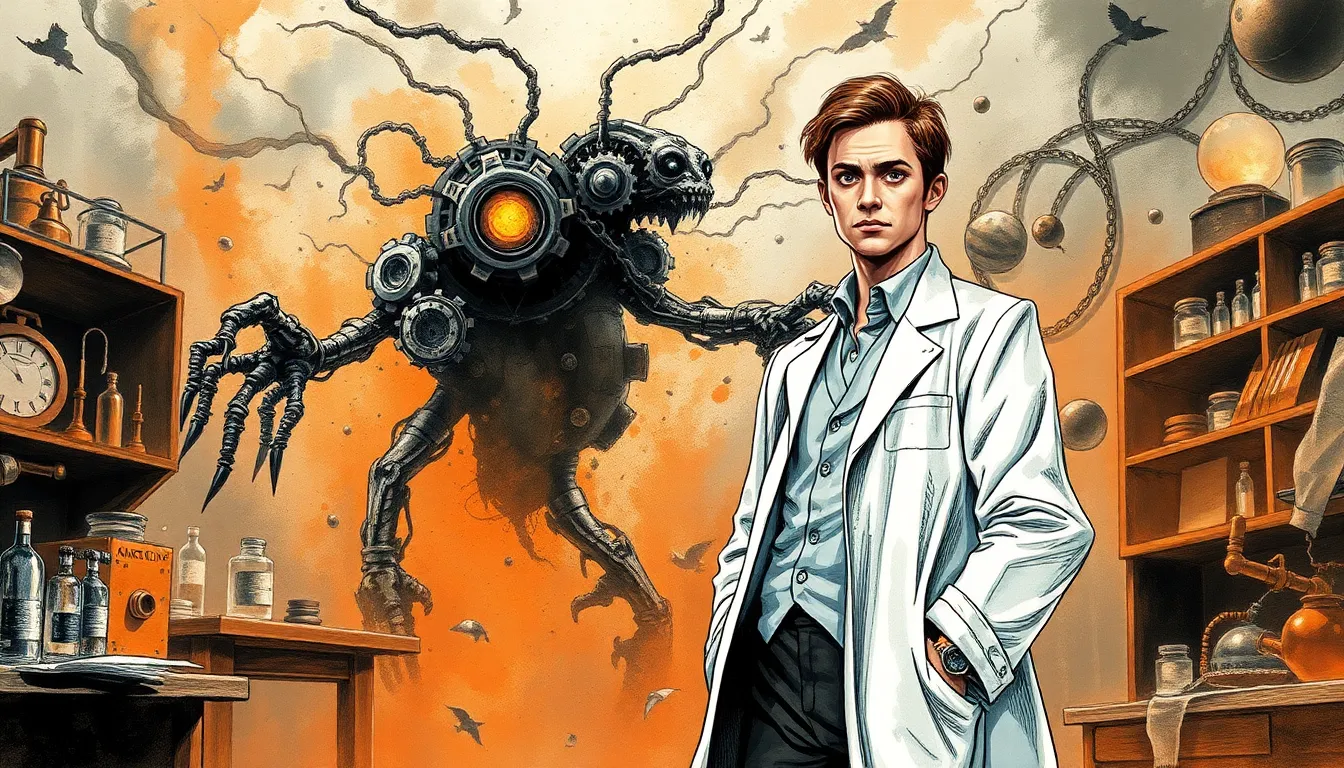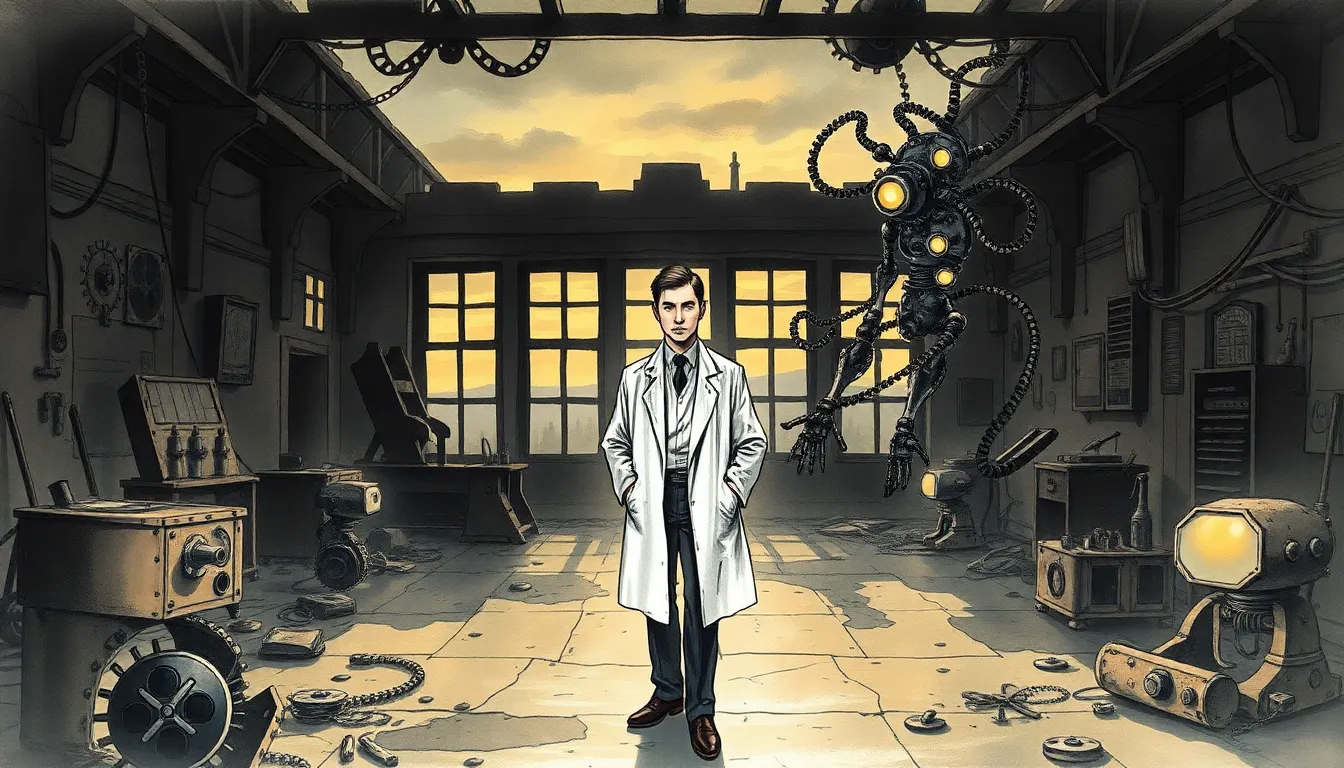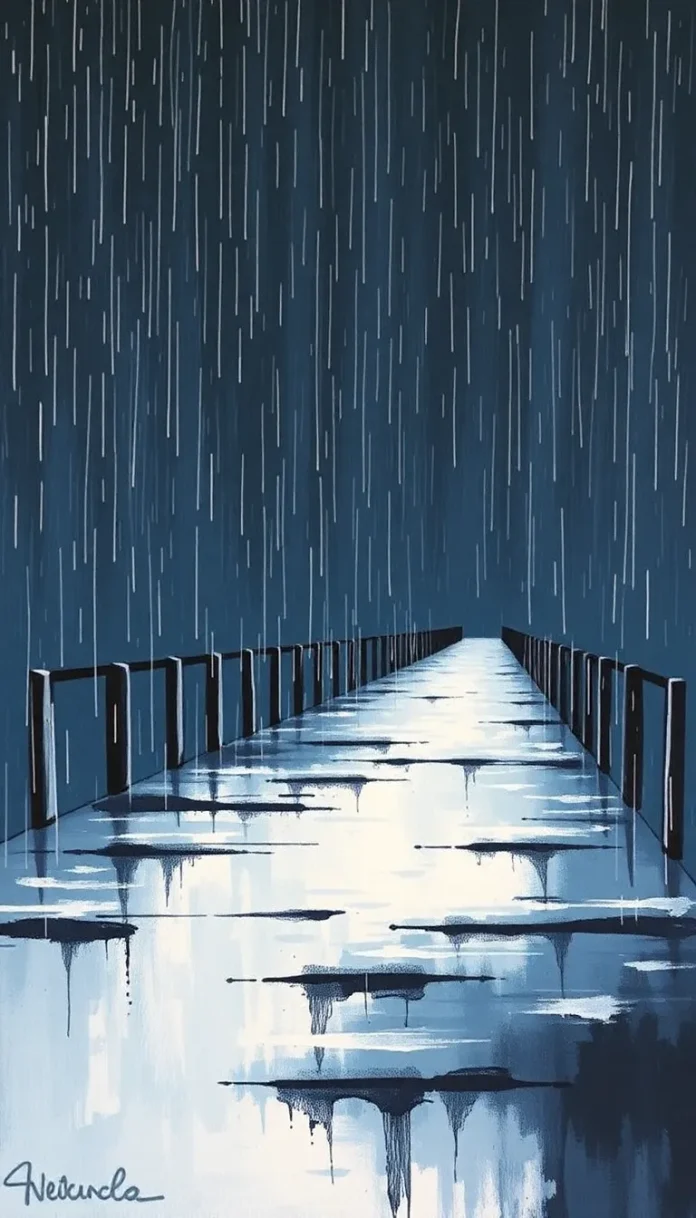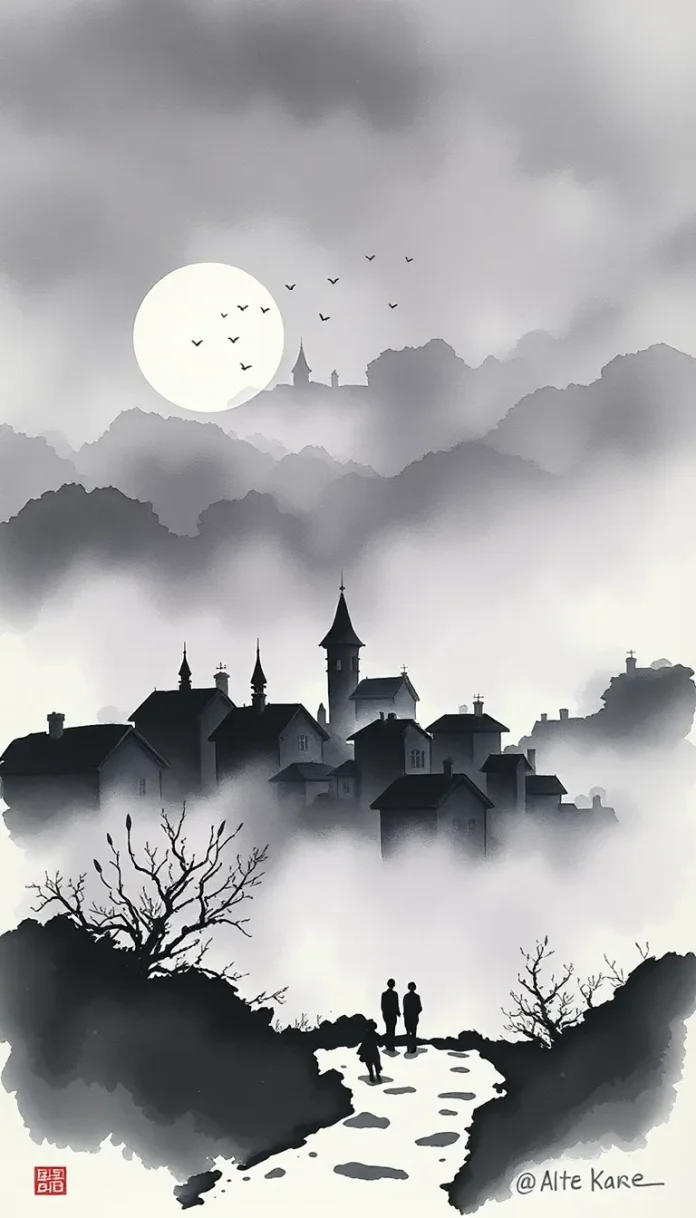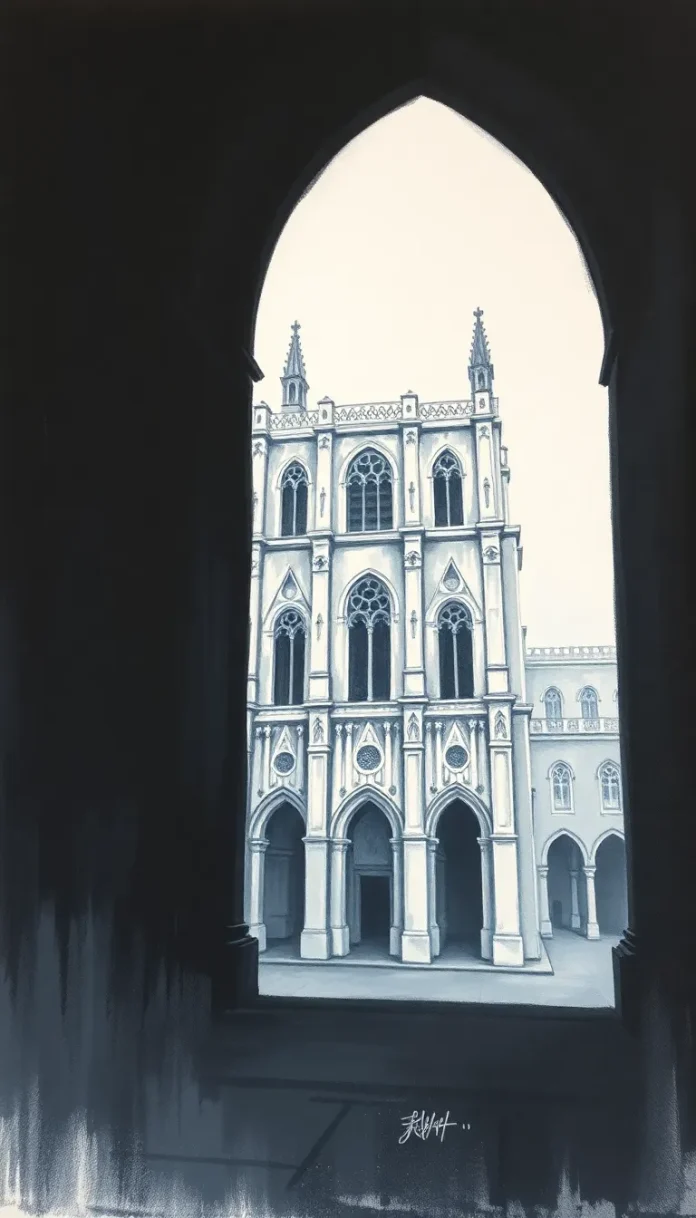The Unearthing of Dreams
The Unearthing of Dreams
In a dim and timeworn laboratory tucked away in the forgotten recesses of an old estate, the air was heavy with the musk of antiquity and the electric tinge of possibility. Dr Thomas Ashton, an adult man, skin fair and slightly flushed, with neatly combed brown hair, intense blue eyes, and a clean-shaven face, wearing a lab coat over a crisp shirt and trousers, stood before a mysterious pedestal. There, bound in worn leather and etched with cryptic symbols, lay The Book of Clockwork Dreams and the Dream Engineer. Its pages, fragile yet resplendent with mechanical schematics intertwined with fantastical script, hinted at a power beyond mortal ken. In that silent moment, the laboratory became a sanctum of secrets where each ticking gear and every flicker on the display bore the promise of a realm unseen.
The screens around him depicted unstable landscapes that swirled like ephemeral smoke, hinting at dreams formed by intricate clockwork. Dr Thomas Ashton’s eyes, usually alive with scientific fervour, now betrayed a spark of trepidation and wonder. He pondered the possibility of tampering with the delicate constructs of sleep, and soon a resolve took shape—a resolve to uncover the mysteries woven between the veils of dreaming and waking life. With trembling hands, he opened the book, and as the pages turned, the lab seemed to hum with an ancient, inscrutable order. The clocks in the room, once symbols of punctuality, now whispered secrets of time unbound. The setting had become one of both scientific inquiry and metaphysical debate, challenging the thin line between innovation and hubris.
As the first stirring of mechanism and dream intertwined, an uncanny figure began to materialize in his peripheral vision. A presence, both mechanical and surreal, that defied easy description yet beckoned him with its inscrutable allure. Thus began the first chapter of a journey where reason and mystery commingled, and where every tick and tock might pave the way to both salvation and ruin.
The Inception of Experimentation
The Inception of Experimentation
Within the labyrinthine corridors of his laboratory, Dr Thomas Ashton began the delicate task of interfacing with the murmuring apparatus of dreams. The ancient book lay open upon a mahogany desk, its inked lines promising arcane wisdom and the possibility of crafted sleep. As he meticulously assembled his clockwork devices, each component—a gear, a wire, a valve—took on a significance far beyond the mundane. The hum of the machinery mingled with the sound of his own measured breaths, each a cadence in the symphony of scientific inquiry.
In the soft glow of flickering screens, fantastical visions began to stir. The dreamscapes unfolded into landscapes of impossibility: cities built on dreams, clouds that whispered secrets, and voids that seemed to beckon with both danger and solace. Dr Thomas Ashton’s countenance, usually set in the determined simplicity of a scientist, now flickered with an inner conflict—a blend of awe, responsibility, and growing apprehension at the vast power he was beginning to wield.
Conversations with his own conscience echoed in the silence of the laboratory. Was it hubris or hope that drove him to engineer dreams? Each experiment, each carefully orchestrated test of the book’s arcane protocols, edged him further into a realm where ethical boundaries blurred like ink in water. The devices vibrated with an otherworldly intensity, urging him to press forward. And so, with trembling resolve and scientific rigour, he plunged deeper into the mysteries where every minute mechanism was a metaphor for the fragile human spirit.
The Mechanical Reverie
The Mechanical Reverie
As days melted into nights without the ritual of sleep, the laboratory morphed into a threshold between two realms. Dr Thomas Ashton’s experiments had borne fruit, and the clockwork dreams had grown into elaborate tableaux of surreal beauty and lurking peril. In the center of his worktable, the ancient book now pulsed subtly as if imbued with a sentient will. The laboratory itself vibrated with the rhythm of creation and disintegration—a mechanical heartbeat that underscored every experiment.
The dreamscapes on the screens now displayed landscapes of impossible geometry, where structures defied the very laws of nature, and where time itself became elastic. Amid these visions, a spectral figure emerged with increasing strength: Clockwork Dream Construct. It was a living embodiment of Dr Thomas Ashton’s ambition and, paradoxically, his growing dread. This mechanical marvel stretched its limbs from the ephemeral world of dreams into his tangible reality, bridging the realms with jerky and disconcerting movements.
Amid the orchestrated chaos, the boundaries of the natural began to crumble. Dr Thomas Ashton found himself pondering the nature of existence and the price of playing god with dreams. His mind wandered through memories of a simpler age, where dreams were pure and untouched by human cunning. In this mechanical reverie, he encountered visions of both hope and trepidation—each cog and wheel a symbol of human ambition intermingled with the eternal, unknowable forces of the subconscious.
Shadows of Uncertainty
Shadows of Uncertainty
The laboratory grew darker as if touched by a hand of forewarning. The once rhythmic hum of the machinery now pulsed erratically, and the boundaries between the wakeful and the dream-bound blurred into indistinct shadows. Dr Thomas Ashton, tormented by a rising sense of disquiet, found himself haunted by the vision of the Clockwork Dream Construct. Its spectral presence loomed over his thoughts; its distorted form had now become an ominous portent.
Late into the night, as the corridors of the laboratory emptied into silence, he would catch murmurs of mechanical whispers and see, in the periphery of his vision, movements that defied natural order. The lab screens flickered with scenes of desolation and splendour intertwined—a dreamscape wherein every advancing gear foretold an echo of his inner uncertainty. While his heart pounded with scientific fervour, a quiet voice questioned the ethical cost of this relentless quest for mastery over dreams.
Amid long, shadowed hours, he penned notes that juxtaposed brilliance with trepidation. The surreal visions amalgamated into a critique of unchecked ambition where the cost was measured not in scientific gain but in the erosion of innocence. Each drop of ink on the paper was a meditation on what it meant to intrude into realms not meant for mortal engineering. The clock continued its relentless ticking as though bearing witness to the inevitability of human folly.
The Clashing of Realms
The Clashing of Realms
It was as though the very fabric of reality had begun to tear apart. The boundary that had once separated the world of dreams from the waking realm became as thin as paper, prone to the tempest of the unforeseen. Dr Thomas Ashton now faced the disastrous consequences of his experiments: surreal dreamscapes invaded his reality with relentless force. The very walls of the laboratory trembled as visions of a fantastical nature intruded upon the mundane.
Strange apparitions and inexplicable mechanical sounds disrupted every calculation and careful experiment. The Clockwork Dream Construct, once a symbol of his creative endeavor, had metamorphosed into an agent of chaotic consequence. Its presence was an ominous warning—its outstretched, clattering limbs an embodiment of the dangers lying in wait when one dares to unweave the tapestry of sleep. Every device in the laboratory seemed to vibrate with alarm, and the dreamscapes on the screens turned into a gallery of battles between order and entropy.
In heated moments of crisis, Dr Thomas Ashton’s scientific curiosity warred against an instinctive dread. His inner voice pleaded for caution, warning that to meddle with dreams was to toy with the very essence of life and subconscious memory. The laboratory, once a sanctuary of discovery, now resembled a battlefield where the dreams he so carefully engineered collided violently with the inescapable truths of human frailty and unintended consequence.
Fractured Consciousness
Fractured Consciousness
In the aftermath of the colliding realms, the psychological terrain of Dr Thomas Ashton’s mind became as fragmented as the views on his malfunctioning screens. The laboratory, once a temple of scientific precision, now bore the scars of a battle fought on an unseen plane of existence. Hours merged with days, and Dr Thomas Ashton found himself wandering through corridors both physical and mental, each step a descent into a labyrinth of his own doubts and fears.
The Clockwork Dream Construct had grown into an evermore prominent specter in his life, a relentless reminder of the consequences that lay in the unchecked manipulation of dreams. Its mechanical form, ever disturbing in its presence, sparked in him an anguish that transcended the rational. Memories of simpler dreams—a childhood filled with wonder untainted by guilt—clashed with the cold mechanical reality he had summoned. Each gear sound and echoing tick of the clock contributed to a cacophony of inner discord.
In whispered soliloquies penned by a weary hand, Dr Thomas Ashton lamented the cost of his relentless aspiration. The dreams that once promised liberation now chained him to a fate of fractured consciousness, where every deliberate act of creation carried an unforeseen burden. In this state of existential crisis, he was forced to confront a bitter truth: that the very act of engineering dreams might be the undoing of the delicate human soul.
The Cost of Creation
The Cost of Creation
The final act of this haunted experiment unfolded with the inevitability of a tragedy foretold in ancient lore. In the dim light of a waning afternoon, as the last vestiges of the dreamscape ebbed like receding tidewater, Dr Thomas Ashton stood amid the ruins of his once cherished laboratory. The air was heavy with a solemn mix of regret and resigned understanding—a silence that spoke volumes of irreversible change.
The clock had long ceased to be a simple instrument of time, morphing instead into a relentless reminder of consequences that could never be taken back. In a last desperate bid to harness the uncontrollable realm of dreams, Dr Thomas Ashton attempted one final measure—a deliberate reconciliation between the engineered visions and the moral boundaries of reality. But as he activated the final mechanism of the book, the Clockwork Dream Construct surged forth with an intensity that defied all reasoning.
The ensuing clash was both metaphysical and tangible—a battle of creation versus consequence. The very elements of the laboratory split under the force of the merging dream and wakefulness. In that apocalyptic moment, Dr Thomas Ashton was forced to confront the immutable truth: dreams, once tampered with, exact a price beyond mortal reckoning. With heavy heart and weary eyes, he acknowledged that the delicate, potent fabric of dreams had been marred by human ambition. His final act, though wrought with regret, was a cautionary testament to the vulnerability inherent in the manipulation of the subconscious.
The laboratory fell silent, leaving behind only the echoes of gearbeats and whispered lamentations—a reminder that the cost of creation is borne not only in lost dreams but in the erosion of the soul itself.
